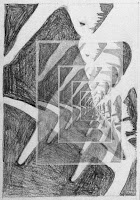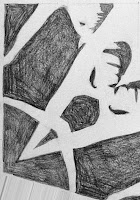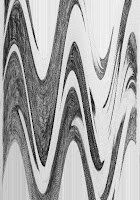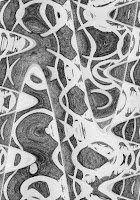
On the way to movie night, I spotted this piece of metal in the dirt by the side of the road. Besides being dirty, it was rusty too, so I didn't want to drop it directly into my bag. I could envision people asking as I looked for something to wrap it in, "What is that in your hand?" and me answering, "Occupational Hazard."
Because, in fact, I have no idea what it is, and it didn't occur to me to wonder what it had fallen off of. I just saw an interesting shape, paused to pick it up and admire it, and just as quickly decided to keep it. It could be traced around. It could be sun printed. It's heavy enough to be a paper weight! And my friends who rust dye are probably drooling over the marks it would leave if wrapped in damp fabric. Spotting and carrying home such bits & pieces to use in my art, you see, is definitely an occupational hazard.
Because, in fact, I have no idea what it is, and it didn't occur to me to wonder what it had fallen off of. I just saw an interesting shape, paused to pick it up and admire it, and just as quickly decided to keep it. It could be traced around. It could be sun printed. It's heavy enough to be a paper weight! And my friends who rust dye are probably drooling over the marks it would leave if wrapped in damp fabric. Spotting and carrying home such bits & pieces to use in my art, you see, is definitely an occupational hazard.



















































